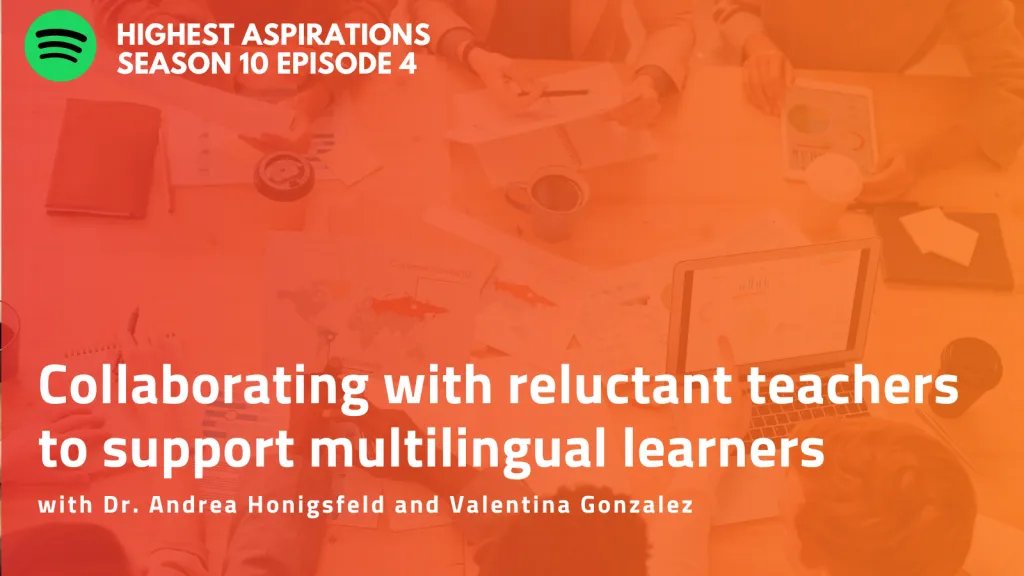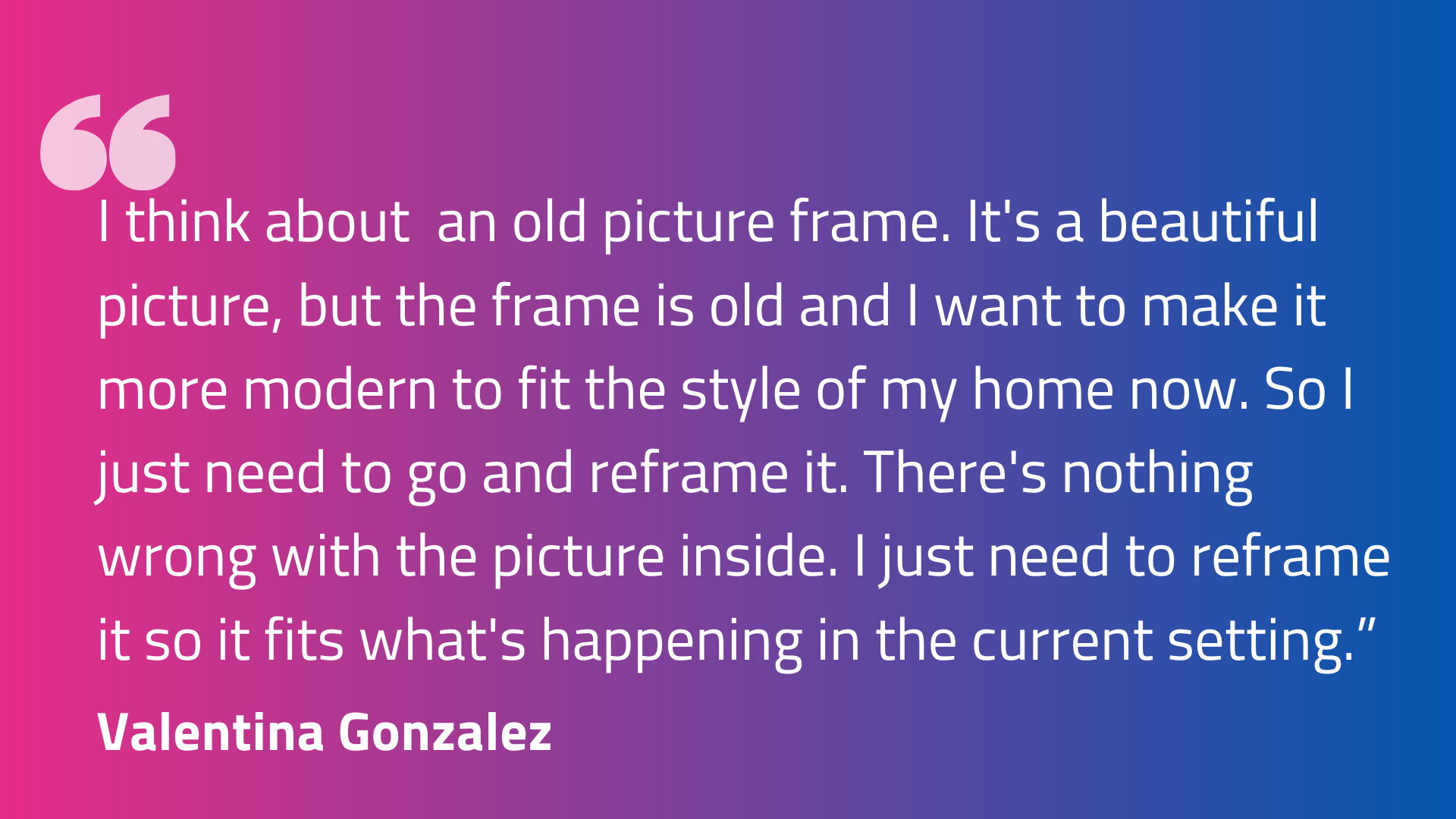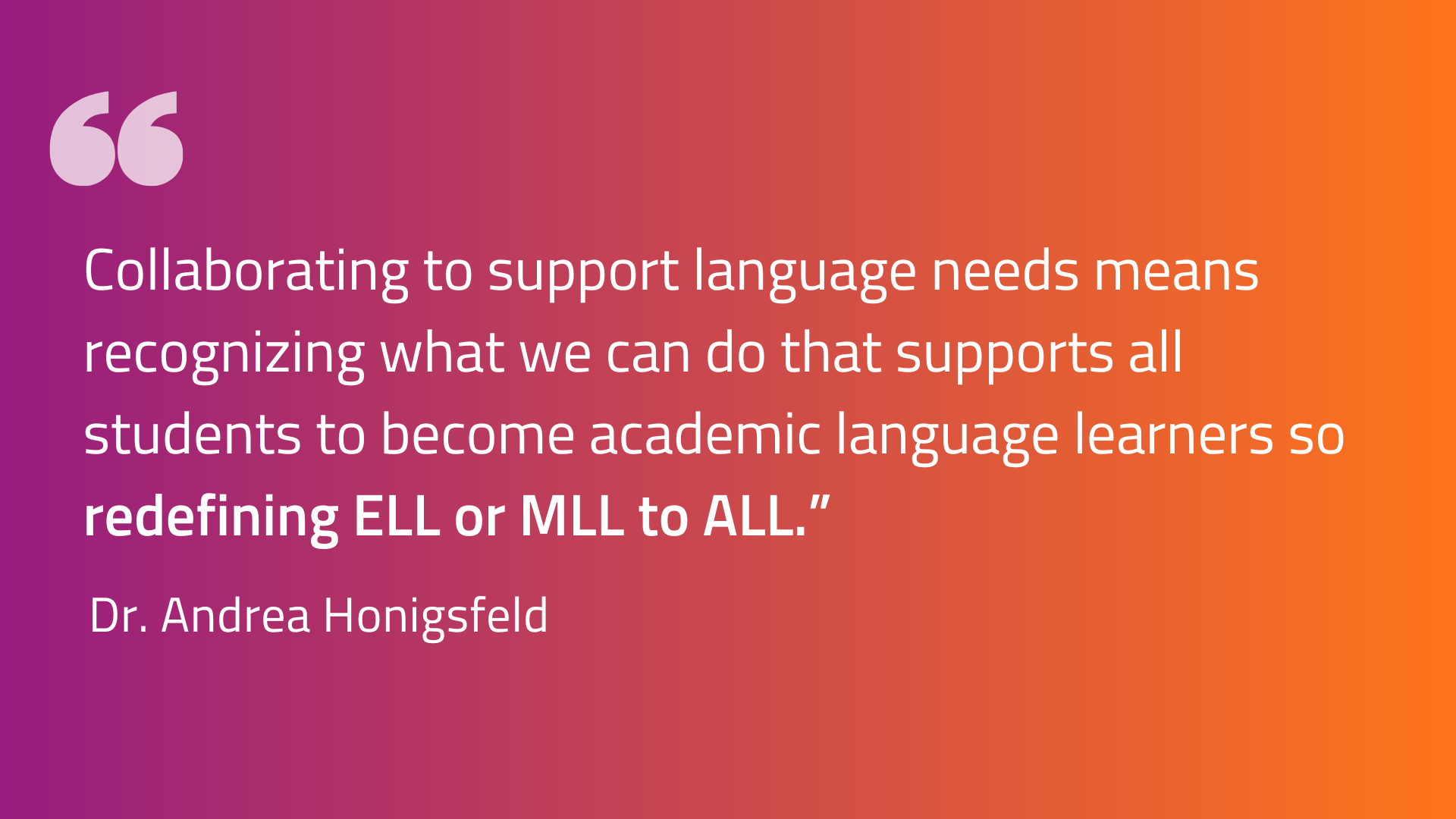Collaborating with reluctant teachers in support of multilingual learners


Collaborating with reluctant teachers in support of multilingual learners
Collaboration can be challenging in the school setting, particularly in individualistic cultures. Many educators may have had negative experiences working with colleagues in the past, or may have preconceived ideas that conflate collaboration only with observation and feeling judged. But there are a number of strategies that can create a safe and supportive professional environment where even the most reluctant of teachers opts in to collaborative practices.
We dive into this topic with Dr. Andrea Honigsfeld and Valentina Gonzalez. Valentina Gonzalez is an educational consultant and content creator for Seidlitz Education, and Dr. Andrea Honigsfeld is a TESOL professor at Molloy University, Rockville Centre, NY. They both offer years of experience in the classroom and recently co-authored a chapter in the book Portraits of Collaboration: Educators Working Together to Serve Multilingual Learners.
Listen to our entire conversation here, and find some actionable steps for improving mindsets around collaboration from Gonzalez and Honigsfeld below.
What steps would you recommend educators take to convince their reluctant colleagues that collaborating to support MLs is not just one more thing like the many initiatives that roll out each year?
Valentina Gonzalez suggests reframing the practice to address fears and misconceptions of collaboration as "just another initiative."

She goes on that in the same way, we need to work towards that in our school system, recognizing that past or outdated practices will not fit our global society today, but we still have a strong foundation to update.
“We have all of these amazing educators, staff, family members - and we are all trying to do the overarching goal of creating students who are smart and think and can do all these great things. Let's work together so that we're all achieving that same goal and not working so hard individually.”
Dr. Andrea Honigsfeld adds that one way to begin to get reluctant colleagues on board is through the mindset that many hands make light work, particularly in a field that is so rapidly changing.
“You have to think about how the work is so complex and challenging to meet the evolving needs of this population, look through that asset-based lens, and create a pathway for success for all of our students that I don't think one single person can do it alone.”
How can we build trusting relationships with our colleagues to set us up for success within collaboration?
Gonzalez emphasizes that trust is most often built bit by bit through small moments and consistently showing up as someone that your colleagues can count on. Showing up at their classroom at the time you say, planning with them on that date you agreed upon, bring the resources you had promised - a chorus of small moments that add up.
Dr. Honigsfeld offers this homework assignment: professionally acknowledge, affirm, compliment the colleagues that you work with.
“When you connect professionally and you recognize each other, how I appreciated the resources you shared in this chapter, Valentina, how we value your professional, personal, professional and collegial, as well as scholarly expertise. Now, I gave Valentina a public compliment and affirmation. That brings our relationship to a whole different level.”
How would you recommend putting systems in place that allow educators to learn from one another without making them feel like they are being judged?
Dr. Honigsfeld and Gonzalez outlined several options that can be implemented at a school or district level to lower intimidation or resistance to educator observations.
Teacher intervisitation which can be structured around peer coaching, peer visitations led by an instructional coach or even an assistant principal. The learning rounds are self-selected or on a volunteer basis and can occur around one campus or with a partner campus.
The basic structure should be that a specific lens for what is being looked at or observed is decided and communicated beforehand, the classroom visits should last a maximum of five minutes, and there should be an opportunity for debriefing and talking about what visitors saw going well in the classroom after. They note the value of these campus learning walks because when evaluation is the only time teachers see another educator in the room, there will be resistance.
Another suggested strategy is the practice of posting pineapple charts outside of teachers’ classrooms. This is a weekly schedule that indicates certain days and periods where the teacher is inviting others to come visit their classroom, specifically during a time when something exciting will be occurring such as a dissection where the students and teacher would welcome visitors to join.
Finally, Gonzalez and Dr. Honigsfeld recommend an ed camp or unconference, which are participant driven and the teachers/educators/administrators come with a topic they are passionate about working through - in this case, methods of collaboration. The idea is that the expertise is sourced from the participants, but rather than in a formal prepared session the ideas and learning is shared through authentic collaborative conversations.
Ultimately the underlying message throughout the conversation is that collaboration is a more effective way to ensure that we all are providing the best support possible for our multilingual students and in turn our entire student body.
“We need to recognize that language is the vehicle that carries the content, carries academic learning, in every context,” closes Dr. Honigsfeld.

Download the full episode transcript here, purchase a copy of Portraits of Collaboration, and follow Dr. Honigsfeld and Valentina Gonzalez to learn more about their work in multilingual education.